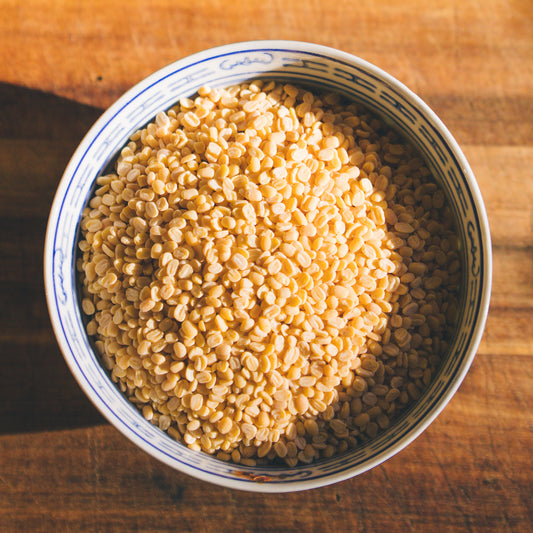The saying “You are what you eat” takes on increased importance in Ayurveda, which teaches that food affects you both physiologically and psychologically. To be more Ayurvedic, we can modify this saying to “You are as healthy as the tastes you consume.” Everything you eat has a certain taste and that taste has specific actions on the body and mind. Ayurveda classifies foods into categories of six tastes, or shad rasa. Rasa is the first action or experience on the tongue once it interacts with food, and shad means six.
The six tastes are sweet (madhura rasa), sour (amla rasa), salty (lavana rasa), bitter (tikta rasa), pungent (katu rasa), and astringent (kashaya rasa). Each taste corresponds to a certain area of the tongue, which stimulates a particular bodily organ. Ayurvedic dietary advice says that it's important to activate all the organs equally for them to function properly. One method of stimulating the internal organs is by activating the taste buds corresponding to that organ!


There is also a direct correlation between the six tastes and the five elements (pancha maha bhuta) in Ayurveda. Each taste is comprised of two elements. Similarly, each of the three doshas is made up of two elements.
Sweet is comprised of earth and water, which are the elements that form kapha dosha. Sour is made up of earth and fire. The elements of water and fire combine for the salty taste, as well as pitta dosha. The air and fire elements bond together to produce the pungent taste. To form the bitter taste, as well as vata dosha, ether and air must join forces. The final stage of digestion is astringent, which is a combination of earth and air.
Effects on the Doshas
Once consumed, the six tastes will either increase or decrease vata, pitta, and kapha. To help balance the doshas, it is important to incorporate all six tastes. Otherwise, eating just one or two tastes will create a doshic imbalance. Conversely, when your doshas are not balanced, consuming all six tastes is a means by which to restore the balance of your doshas. By eating a doshic diet, you can observe both physical and mental changes, and the six tastes serve as a natural guide for your body's nutritional needs. Your body has the inner intelligence to understand what is deficient and what is excessive in its internal mechanism.

The sweet and salty tastes are anabolic and they increase kapha dosha while balancing vata and pitta. The sour taste is metabolic and it will increase pitta dosha while balancing vata and kapha. The bitter, pungent, and astringent tastes are catabolic, and they will increase vata dosha while balancing pitta and kapha. For a more in-depth discussion, read Ayurveda & The Six Tastes.
According to Ayurveda, it takes six hours for food to digest, and there is one hour allocated for each of the six tastes. As food moves through the body, specific digestive functions take place in each organ. Each of the six tastes nourish and produce rasa dhatu, the plasma and lymph, which is the first tissue system in the body according to Ayurvedic anatomy.
The Digestion Connection
Taste is also a crucial part of the digestive process. When we taste our food, it stimulates the digestive fire (agni) and then facilitates digestive acid secretions by activating neurological impulses in the hunger center of the brain! If you incorporate all six tastes in your meals, and then adjust the proportions of each taste for your current doshic requirements, you can balance your body's nutritional needs. You'll simultaneously be supporting your health and vitality, and your brain will feel satiated so you'll be less likely to give in to false hunger cravings.
Ayurveda says that a main cause of disease is ama, or undigested food substances. Ama can appear as a thick, white coating on the tongue, gas, bloating, or heartburn. It can even progress to create constipation or diarrhea. Often food is poorly digested and creates ama if you are eating too much of one type of food without providing the proper digestive aids. For example, if you eat too much sweet, then you are probably lacking the sour foods (e.g. lemon) that are needed to stimulate the digestive fire and activate the proper absorption and assimilation of nutrients.
Ayurveda views food as medicine, and by taking your daily dose of “medicine” you can promote healing in the body and mind. A great way to begin is by making sure that your plate is full—of all six tastes. Your taste buds will thank you and your body will exhibit its gratitude through healthy digestion.












